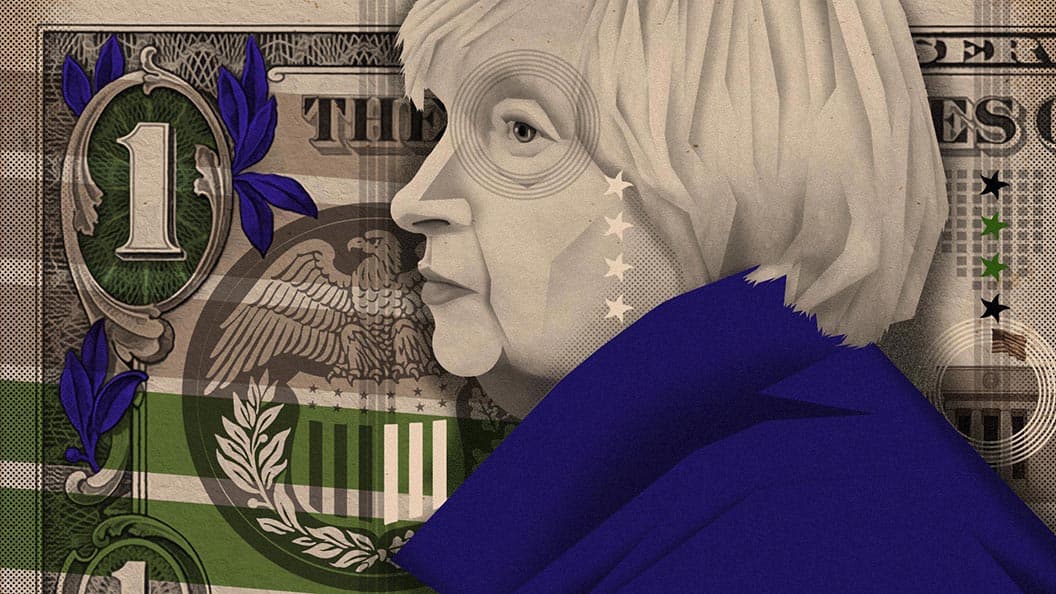US Regulators: Stablecoin Issuers Should Follow Same Rules as Banks
A new report asks Congress to establish guidelines as quickly as possible, including a policy that requires stablecoin issuers be insured banks.

Janet Yellen, US Secretary of the Treasury; Blockworks Exclusive Art by Axel Rangel
- The President’s Working Group on Financial Markets (PWG), the Federal Deposit Insurance Corporation (FDIC) and the Office of the Comptroller of the Currency (OCC), released a report on stablecoins Friday
- The regulatory bodies agree that stablecoin issuers need greater oversight
A group of United States regulatory bodies called on Congress to increase stablecoin oversight in a report released Monday.
“Stablecoins that are well-designed and subject to appropriate oversight have the potential to support beneficial payments options. But the absence of appropriate oversight presents risks to users and the broader system,” said Secretary of the Treasury Janet Yellen in the report. “Current oversight is inconsistent and fragmented, with some stablecoins effectively falling outside the regulatory perimeter.”
The President’s Working Group on Financial Markets (PWG), the Federal Deposit Insurance Corporation (FDIC) and the Office of the Comptroller of the Currency (OCC) collaborated on the report, which covered a range of potential risks and use cases.
“The potential for the increased use of stablecoins as a means of payments raises a range of concerns, related to the potential for destabilizing runs, disruptions in the payment system, and concentration of economic power,” the report read.
If regulated properly, stablecoins could “support faster, more efficient, and more inclusive payments options,” the report acknowledges.
“I am not surprised by the report. I don’t think that regulation should be seen as an alarming event,” said David Tawil, president of ProChain Capital. “Regulations of stablecoins should be relatively simple and are necessary to give the public and regulators confidence in the various stablecoin offerings.”
The report asks Congress to establish guidelines as quickly as possible, including a policy that requires stablecoin issuers be insured banks.
“To address risks to stablecoin users and guard against stablecoin runs, legislation should require stablecoin issuers to be insured depository institutions,” the report states.
The report comes amid growing concerns over the nature of how stablecoins are backed. The one-to-one backing most issuers claim is likely not the reality when it comes to the assets supporting coins like Tether (USDT) and USD Coin (USDC).
Most recently, forensic financial research and famous short selling firm Hindenburg Research announced a Tether Bounty Program, which will reward up to $1 million for anyone who can provide deeper insight into the backing of the largest stablecoin in the digital asset space.
“This is exactly the type of regulation we as an industry were expecting — anyone claiming to be a US dollar backed token needs to have a US dollar in the bank. And not just any bank, a US regulated bank,” said Matthew Gould, CEO and Founder of Unstoppable Domains. “The devil is in the details, but this proposal on the surface is reasonable and is likely to bring a whole new class of companies into the stablecoin space: banks!”






